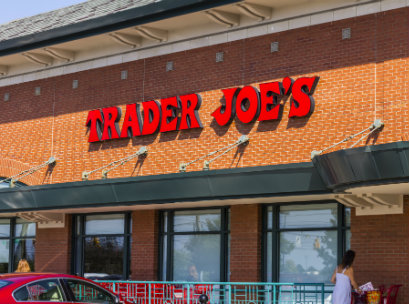 Trader Joe’s has topped a consumer survey of US grocers for the second year in a row, with Costco and Amazon taking second and third positions respectively.
Trader Joe’s has topped a consumer survey of US grocers for the second year in a row, with Costco and Amazon taking second and third positions respectively.
The grocery edition of dunnhumby’s annual Retailer Preference Index surveyed 7,000 US households to determine which of the top 56 largest grocery retailers have the strongest combination of financial performance and emotional connection with consumers.
“Trader Joe’s is a prime example of a retailer making trade-offs in order to deliver superior value,” the report stated. “With its small format, lack of digital shopping and limited national brand offering, the retailer focuses on speed of in-store shopping and having a rich private brand offering.”
While this bricks-and-mortar only approach minimizes costs and keeps prices low, the report recognised that it sacrifices reaching customers through a growing digital channel.
Wegmans, Market Basket WinCo Foods and Walmart all made the top 10, while discount grocer Aldi just missed out, taking the 11th position. The German retailer is expanding its store count in the US by around 50 per cent in the coming years. Fellow German discount grocer Lidl has prompted its nearby competitors to lower prices anywhere between 10-50 per cent since its entry into the US.
Price and quality are above all the most important needs for consumers, and while digital, speed, convenience or discounts/rewards, are still important, they were found to have a weaker association with retailer preference.
The report found that many retailers who saw improvements in their digital rank also tended to see slips in their operations (i.e. out of stocks, pricing consistency, clean stores, right product variety). Dunnhumby suggests that retailers be cautious not to take their eye off the basics.
For some traditional and regional grocers, discounts/rewards and promotions contribute to sales growth, but for many, they are adding to financial difficulty. Hundreds of millions of dollars are spent on discounts, rewards and promotions every year in the US, but over two-thirds don’t break even.
“To maximize the success of a discounts/rewards program, retailers need to have at least average price perception and a highly relevant assortment, supported by a strong private brand,” the report stated.
Jose Gomes, president of North America for dunnhumby, predicted “turbulent times” ahead for grocery retailers.
“While consumer confidence in the US is at a near 18 year high and the US economic growth is outpacing the rest of the world, there are signs of turbulent times ahead and grocery retailers need to be prepared,” Gomes said.
“Because of pressures that grocery retailers are facing today, a common reaction is to think only of the short term. But by focusing on the customer preference levers that we have identified in this RPI to inform their strategies, retailers can buy an insurance policy for the future to ensure they can weather the storms ahead.”
Grocery retailers with highest overall consumer preference index scores:
1) Trader Joe’s
2) Costco Wholesale
3) Amazon
4) H-E-B
5) Wegmans Food Markets
6) Market Basket
7) Sam’s Club
8) Sprouts Farmers Markets
9) WinCo Foods
10) Walmart
11) Aldi
12) Peapod
13) The Fresh Market
















